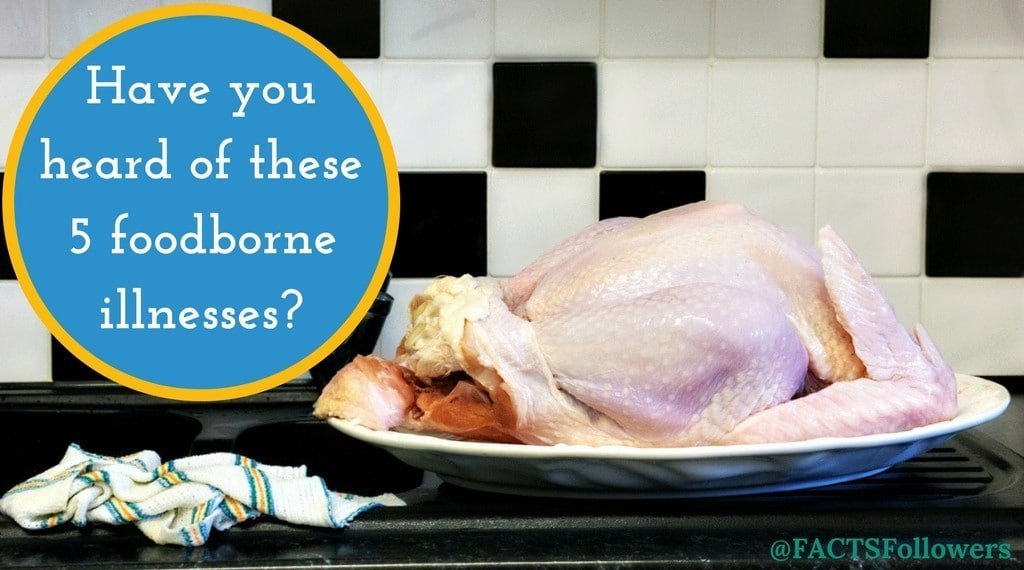“Don’t eat raw cookie dough or you’ll get salmonella,” is something my mom consistently told me growing up, and I’m sure you have probably heard that too at one point or another. Most people are familiar with Salmonella and E. coli, but there are numerous other foodborne illnesses that aren’t as well known, but still very common. The Center for Disease Control and Prevention (CDC) estimates that 1 in 6 Americans get sick from some sort of foodborne illness each year. To avoid being one of these six, here are four lesser known, but still common foodborne illness and ways to prevent them.
Norovirus
According to the CDC, the norovirus is the leading cause of disease outbreaks from contaminated food in America. Leafy greens, fresh fruits, and shellfish are foods that are often involved in these outbreaks. To lessen the chance of getting norovirus, make sure you are washing fruits and vegetables thoroughly, washing your hands before and after you touch food, and cooking seafood to an internal temperature of 145°F. But I can only get norovirus in the winter right? Not true. Your chances of getting norovirus in the winter are higher due to the increased amount of time people spend indoors, which facilitates the spread of germs. Be vigilant about hygiene during every season!
Clostridium Perfringens
Often associated with cafeterias and buffets, Clostridium perfringens is commonly found in foods that are prepared in large quantities and kept warm for long period of time: raw meat and poultry, stews, casseroles, and gravies to name a few. My former roommate used to put everything in the microwave to keep it warm. Casseroles, lasagna, dumplings… you name it; it was probably sitting in the microwave. This is a breeding ground for foodborne diseases like C. perfringens. Perishable foods need to be held at over 140°F or put in the fridge within two hours of sitting out. Large batches of food should be separated into small quantities for refrigeration, and it should be reheated to at least 165°F.
Campylobacter
Raw and undercooked poultry, unpasteurized milk, contaminated water, and fresh produce are the foods more commonly associated with Campylobacter outbreaks. To avoid these outbreaks, cook poultry to an internal temperature of 165°F, wash hands before and after touching raw meat, avoid drinking unpasteurized milk, wash fruits and vegetables, and always use clean cutting boards. Despite what you may think, Campylobacter cannot survive ambient conditions. Cleaners and disinfectants easily destroy the bacteria. So, simple hygienic measures are the best way of eliminating the spread of Campylobacter.
Listeria Monocytogenes
Listeria monocytogenes most commonly affects people with weak immune systems like older adults, newborns and pregnant women. Uncooked meats, unpasteurized milk and soft cheeses (like Brie and feta), ready-to-eat deli meats, and hot dogs are regularly involved with Listeria outbreaks. Okay, prevention on this is pretty easy: don’t eat unpasteurized cheese or drink unpasteurized milk and follow the other food safety tips we’ve reviewed. Wash your hands, knives, countertops, and produce, thoroughly cook raw meats, and keep them away from other foods. Consume perishable and ready-to-eat foods as soon as possible. What should you do when they expire? Freezing them will probably kill harmful bacteria, right? False. Listeria is a foodborne pathogens that can survive for a long period of time at freezing temperatures, so make sure you freeze foods before they expire.
Clostridium Botulinum
Botulism, which is caused by a Clostridium botulinum (C. botulinum) bacterial infection causes a rare, yet serious, illness. Toxins released by the bacteria are the key culprit and they can cause paralysis if they are ingested. Infant botulism is the most common form of botulism incidence in people.
Even though this illness can be life-threatening, there are many ways to prevent infection. Since, C. botulinum is found on the surface of fruits, vegetables, and seafood, it’s important to practice safe food handling during food preparation, especially when home canning, a practice that has seemed to gain interest recently.
In order to prevent illness during home canning, make sure that foods reach a pH of 4.6, which prevents bacterial growth. Another way to accomplish this is to use the water boiling method or a pressure cooker when canning veggies and meat, making sure that temperatures reach 250°F. In the grocery store, be sure to avoid cans that appear swollen or are damaged because this can be a sign of C. botulinum growth. Still, other foods that are “ready-to-eat” and are in low-oxygen-packaging are most frequently involved in cases of foodborne botulism. Finally, it is also important to make sure to refrigerate leftovers two hours (or 1 hour if the temperature is about 90 degrees Fahrenheit) after cooking.
So, you’re basically a food safety expert now! Foodborne illnesses can be deadly, and at the very least cause nausea, abdominal cramps, vomiting, and diarrhea. If you’ve never experienced it, take it from me (PS – never eat gas station sushi). But in all seriousness, preventing foodborne illnesses can be easy if you practice safe food handling and take heed to our words of wisdom.
Danielle Corrado, intern from the University of Massachusetts, Amherst, contributed to this blog post.
